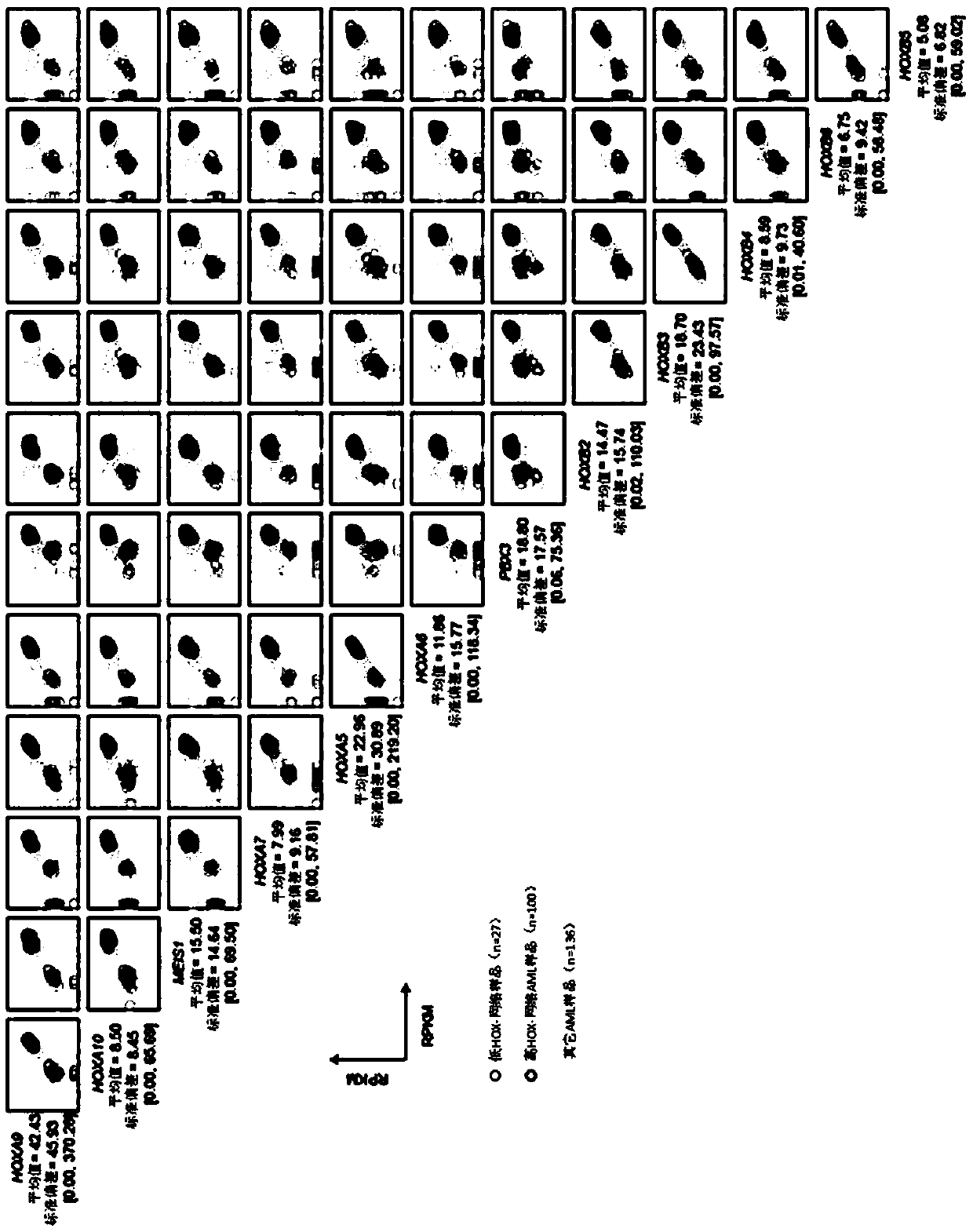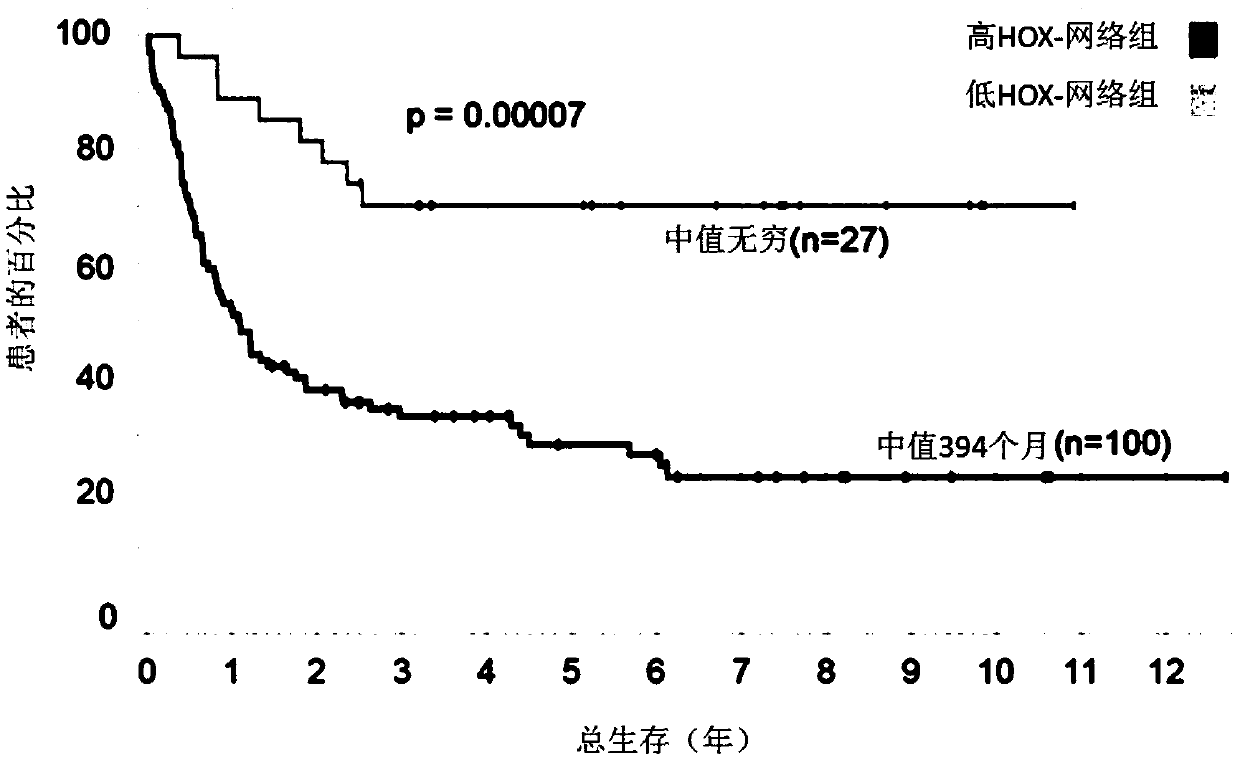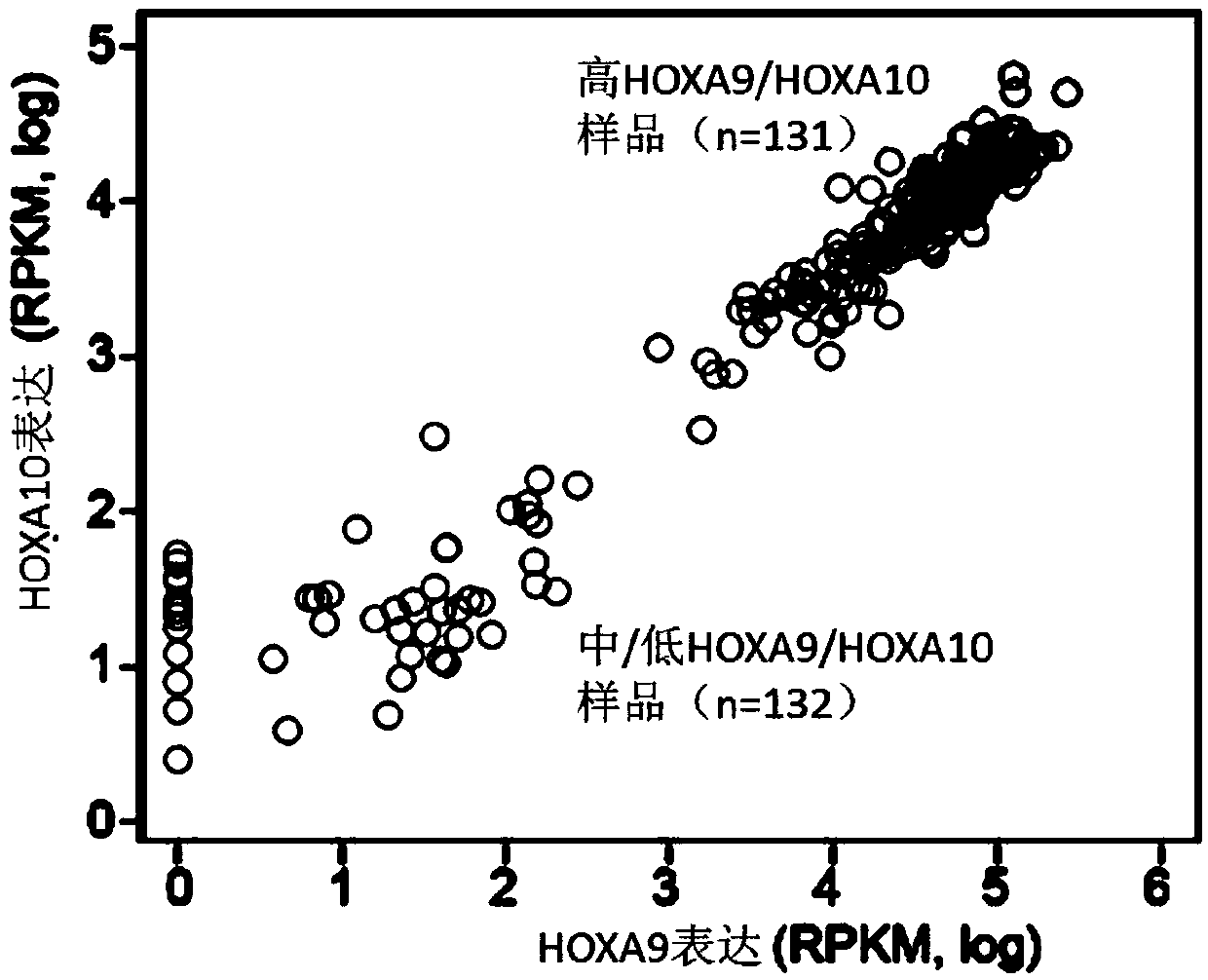Use of mitochondrial activity inhibitors for the treatment of poor prognosis acute myeloid leukemia
An acute myeloid and inhibitory technology, applied in the field of treatment of acute myeloid leukemia, can solve problems such as discontinuity and incomplete response
- Summary
- Abstract
- Description
- Claims
- Application Information
AI Technical Summary
Problems solved by technology
Method used
Image
Examples
Embodiment 1
[0223] Example 1: Materials and methods
[0224] Human Leukemia Samples
[0225] The study was approved by the Research Ethics Board (REB) of the University of Montreal, Maisonneuve-Rosemont Hospital and Charles Lemoyne Hospital (QC Longueuil, Canada). All AML samples were collected between 2001 and 2017 with informed consent according to the procedures of the Banque de Cellules Leucémiques du Québec (BCLQ). Cord blood (CB) units were collected from consenting mothers and Positive selection kit (StemCellTechnologies, Vancouver, Canada, catalog number 18056) to isolate human CD34 + CB cells (Fares et al. Science. 2014 Sep 19;345(6203):1509-12).
[0226] chemical screening
[0227] Primary cells: Frozen AML monocytes were thawed at 37°C in Iscove's Modified Dulbecco's Medium (IMDM) containing 20% FBS and DNase I (100 μg / mL). Cells were then cultured in optimized AML growth medium as previously reported (Pabst, C. et al. Nature methods 11, 436-442, 2014): IMDM, 15% BI...
Embodiment 2
[0248] Example 2: HOX-high AML patients generally have poor disease prognosis.
[0249] AML cell samples belong to the HOX network ( Figure 1A Consistently high expression of genes in ) was shown to correlate with significantly reduced overall patient survival ( Figure 1B ). Figure 1C The correlation between HOXA9 and HOXA10 expression in leukemia cells is shown. Figure 1D It was shown that the survival of AML patients belonging to the HOXA9 / HOXA10 high group was similar to the patients belonging to the HOX-network high subgroup shown in FIG. 1 . Such as Figure 1B As shown, it is suggested that high expression of HOXA9 and HOXA10 can be used as a surrogate to detect HOX network high-patients. Taken together, these data show that patients with highly expressed AML cells exhibiting HOX-network genes have a poor prognosis and will benefit from appropriate AML treatment.
Embodiment 3
[0250] Example 3: Mulitinib effectively inhibits HOX-high AML cells.
[0251] Using high expression of HOXA9 and HOXA10 as a surrogate for detection of HOX-network-high patient samples, HOX- Survival of high and HOX-medium / low samples ( Figure 2A ,Table 4).
[0252] Table 4: Chemical Screening Results of HOX-High vs. HOX-Medium / Low Samples
[0253]
[0254]
[0255]
[0256]
[0257] HOX-high patient cells were significantly more sensitive to the RTK ERBB2 inhibitor mulitinib when compared to HOX-medium / low samples ( Figure 2B ). No statistically significant differences were observed for the other compounds tested.
[0258] A dose-response validation screen in a large number of AML samples confirmed that HOX-high patient cells were significantly more sensitive to mulitinib than HOX-intermediate / low AML cells ( Figure 2C -D). Median mulitinib EC in the tested AML population 50 About 375nM ( Figure 2E ). Patients belonging to the mulitinib sensitive grou...
PUM
 Login to View More
Login to View More Abstract
Description
Claims
Application Information
 Login to View More
Login to View More - R&D
- Intellectual Property
- Life Sciences
- Materials
- Tech Scout
- Unparalleled Data Quality
- Higher Quality Content
- 60% Fewer Hallucinations
Browse by: Latest US Patents, China's latest patents, Technical Efficacy Thesaurus, Application Domain, Technology Topic, Popular Technical Reports.
© 2025 PatSnap. All rights reserved.Legal|Privacy policy|Modern Slavery Act Transparency Statement|Sitemap|About US| Contact US: help@patsnap.com



